

The Fall of the Berlin Wall in Photos: An Accident of History That Changed The World. The Communist regime was prepared for everything “except candles and prayers.”

East Germany’s peaceful 1989 revolution showed that societies that don’t reform, die. BERLIN — When Werner Krätschell, an East German pastor and dissident, heard that the Berlin Wall was open, he did not quite believe it. But he grabbed his daughter and her friend and drove to the nearest checkpoint to see for himself. It was the night of Nov. 9, 1989. As their yellow Wartburg advanced unimpeded into what had always been an off-limits security zone, Mr. “You are dreaming,” the guard replied. It had long been a dream for East Berliners like Mr. The Colfax Riot - The Atlantic. It is highly unlikely that you might just stumble upon Colfax, Louisiana; it's not on an interstate, and the only two things in the immediate vicinity that might qualify as conventional tourist attractions—a pair of Union warships that were sunk nearby during the Civil War—are, in fact, buried deep beneath the soil.
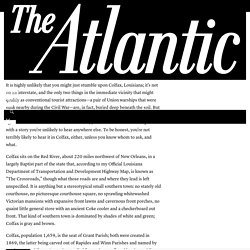
But if, by some chance, you should find yourself in Colfax—as I did a few years ago—and take the time to look around a bit, you will discover that it is a place with a story you're unlikely to hear anywhere else. To be honest, you're not terribly likely to hear it in Colfax, either, unless you know whom to ask, and what. Colfax sits on the Red River, about 220 miles northwest of New Orleans, in a largely Baptist part of the state that, according to my Official Louisiana Department of Transportation and Development Highway Map, is known as "The Crossroads," though what those roads are and where they lead is left unspecified. I was right. "Where? " "There," she said. Haymarket affair. The Haymarket affair (also known as the Haymarket massacre or Haymarket riot) refers to the aftermath of a bombing that took place at a labor demonstration on Tuesday May 4, 1886, at Haymarket Square[2] in Chicago.
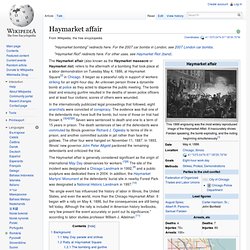
It began as a peaceful rally in support of workers striking for an eight-hour day. An unknown person threw a dynamite bomb at police as they acted to disperse the public meeting. The bomb blast and ensuing gunfire resulted in the deaths of seven police officers and at least four civilians; scores of others were wounded. The Haymarket affair is generally considered significant as the origin of international May Day observances for workers.[7][8] The site of the incident was designated a Chicago Landmark in 1992,[9] and a public sculpture was dedicated there in 2004.
In addition, the Haymarket Martyrs' Monument at the defendants' burial site in nearby Forest Park was designated a National Historic Landmark in 1997.[10] Background[edit] May Day parade and strikes[edit] Bal des Ardents. The Bal des Ardents (Ball of the Burning Men[1]) or Bal des Sauvages[2] was a masquerade ball[note 1] held on 28 January 1393 in Paris at which Charles VI of France performed in a dance with five members of the French nobility.
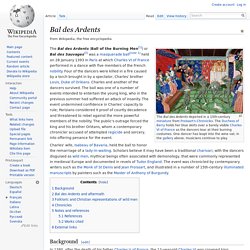
Pueblo Revolt. The location of the Pueblo villages and their neighbors in early New Mexico.
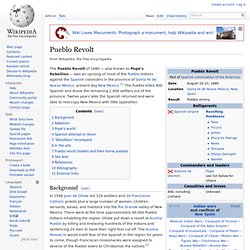
The Pueblo Revolt of 1680 — also known as Popé's Rebellion — was an uprising of most of the Pueblo Indians against the Spanish colonizers in the province of Santa Fe de Nuevo México, present day New Mexico.[1] The Pueblo killed 400 Spanish and drove the remaining 2,000 settlers out of the province. Twelve years later the Spanish returned and were able to reoccupy New Mexico with little opposition. Background[edit] In 1598 Juan de Oñate led 129 soldiers and 10 Franciscan Catholic priests plus a large number of women, children, servants, slaves, and livestock into the Rio Grande valley of New Mexico. There were at the time approximately 40,000 Pueblo Indians inhabiting the region. From 1540 to 1600 the Pueblos were subjected to seven successive waves of soldiers, missionaries and settlers. Rebellion[edit] Taos Pueblo served as a base for Popé during the revolt. Prague Spring. The Prague Spring (Czech: Pražské jaro, Slovak: Pražská jar) was a period of political liberalization in Czechoslovakia during the era of its domination by the Soviet Union after World War II.

It began on 5 January 1968, when reformist Alexander Dubček was elected First Secretary of the Communist Party of Czechoslovakia, and continued until 21 August when the Soviet Union and other members of the Warsaw Pact invaded the country to halt the reforms. War of Canudos. The War of Canudos ( Guerra dos Canudos , Portuguese pronunciation: [ˈgɛʁɐ duʃ kɐ̃ˈnuduʃ] , 1896–1897) [ 1 ] was a conflict between the state of Brazil and a group of some 30,000 settlers who had founded their own community in the Northeastern state of Bahia , named Canudos .
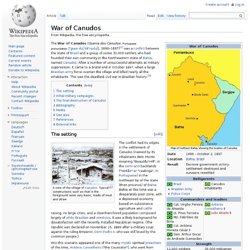
After a number of unsuccessful attempts at military suppression, it came to a brutal end in October 1897, when a large Brazilian army force overran the village and killed nearly all the inhabitants. This was the deadliest civil war in Brazilian history. [ 1 ]